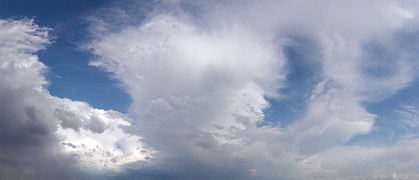
By Jessica Miller
Staff Writer
Daylight Saving Time can be confusing and often seems pointless to people, but overall it benefits both students and teachers by saving energy, making summer days longer, and increasing the amount of light during winter mornings.
Daylight Saving Time is a change in the standard time of each time zone that was first used by railroads in 1883. It now occurs annually in California at 2 a.m. on the first Sunday of November and at 2 a.m. on the second Sunday of March every year. This year, we “fall back” on Nov. 3, meaning that the clocks move back an hour, and “spring forward” on Mar. 9, meaning that the clocks move forward an hour.
Studies done in the 1970s by the United States Department of Transportation say Daylight Saving Time saves 1% of energy each day. Since Daylight Savings makes the sun set an hour later in the spring and summer, it reduces the period between sunset and bed time by one hour, therefore effectively saving energy.
California residents benefit from Daylight Saving Time because of the mild weather. People are likely to stay out later in the day when the sun is out, hence saving energy because people are not using the electricity in their houses when they are not home.
When we “fall back,” it will be easier 0 period students and teachers to wake up because it will be lighter outside. Students will also gain an hour of sleep. Senior Mary Komick takes a 0 period class and says waking up in the dark is more difficult, and it being lighter when she wakes up would aid her in starting her day.
When we “spring forward” in March, students will lose an hour of sleep. Even though this sounds like a poor idea, Komick says students will especially enjoy it during the summer when the sun doesn’t set until 7 or 8.
Consequently, Daylight Saving Time can complicate time keeping and sleep patterns. Some software on clocks change automatically, but these changes do not work on all devices. Most newer devices such as iPhones have software that change automatically, but others such as a computer running on an older version of Windows will need to be switched manually.
It is likely for people to become confused when the time changes, and if they are not aware of the change it can cause them to be an hour late or hour early for certain events. In order to prevent time keeping complications, people should be aware of when the clocks change so they know what to expect. As for sleeping pattern difficulties, there is nothing that can prevent this, although an hour time difference seldom causes conflicts.
According to English teacher Anne Brown, Daylight Saving Time is acceptable because everyone will enjoy an extra hour of sleep in November. Being a 0 period teacher, she is also excited for it to be lighter when she wakes up. However, Brown thinks Daylight Saving Time doesn’t drastically affect anything, which makes it slightly irrelevant. Because the time change is only an hour, it doesn’t make a huge difference whether we have it or not. Still the small difference it makes in light and energy-saving make it worthwhile.
Although Daylight Saving Time may seem pointless to California residents, the overall advantages outweigh the disadvantages and it should continue to be used in California to save energy. The benefits of lighter mornings in the winter students not waking up when it’s dark and longer summer days are essential over the small complications of changing the clock.




Leave a Reply